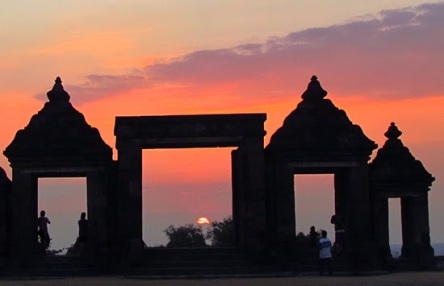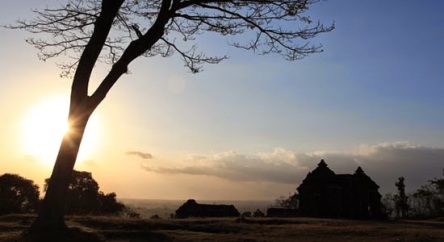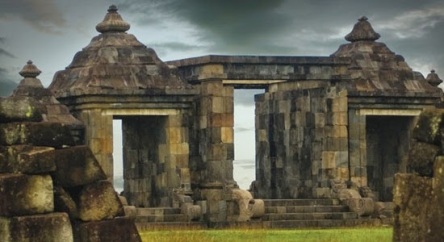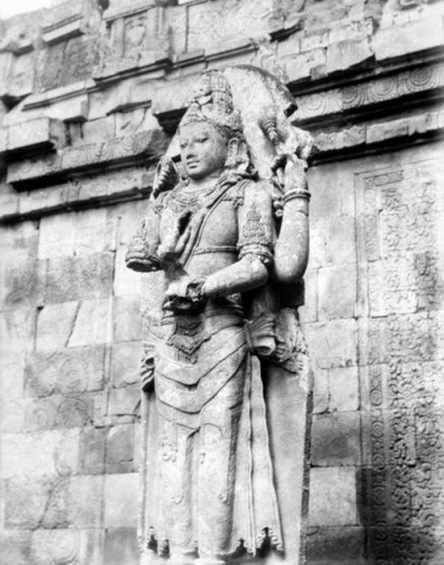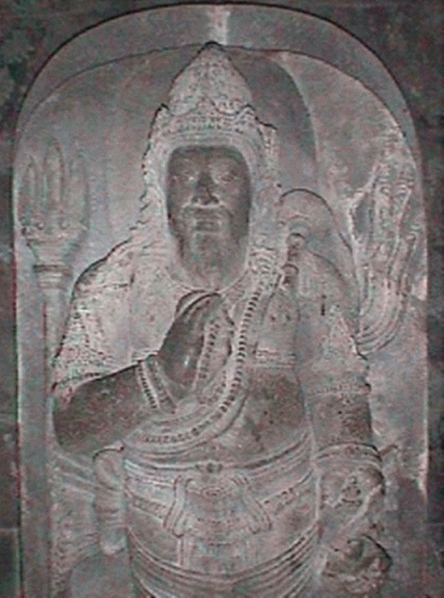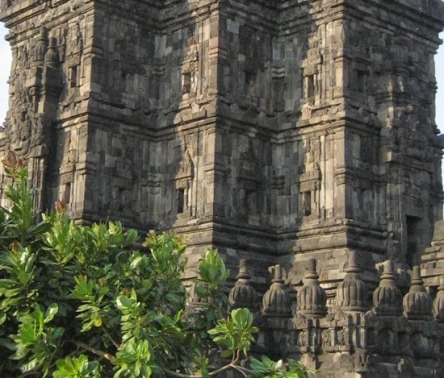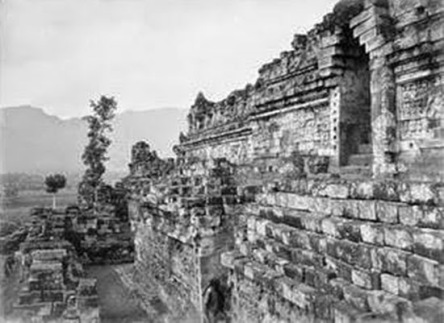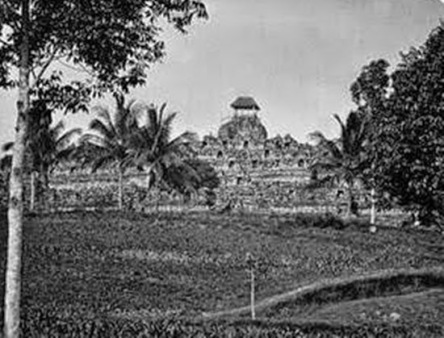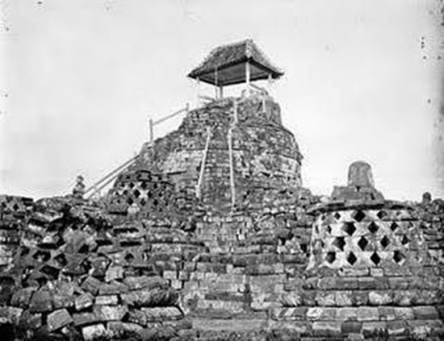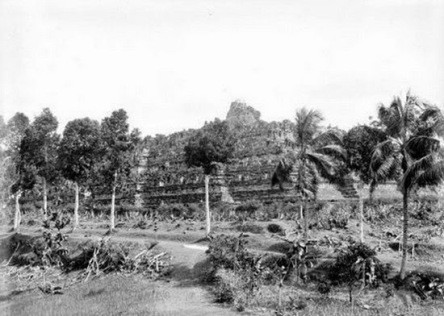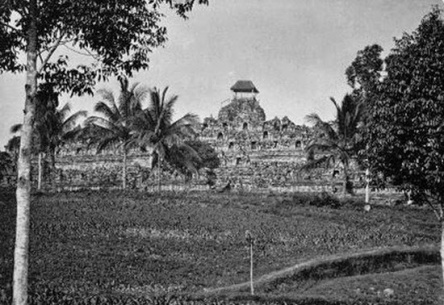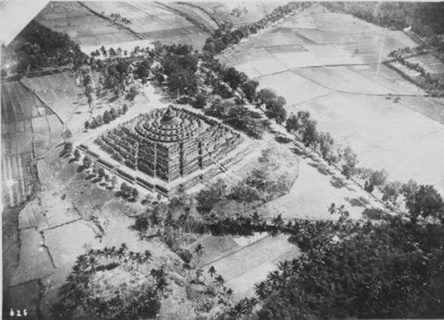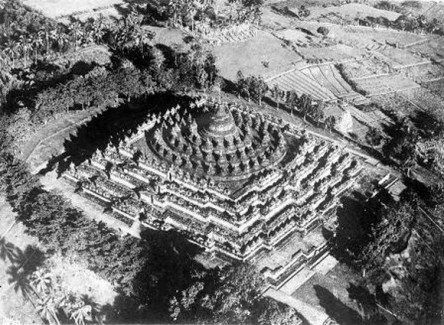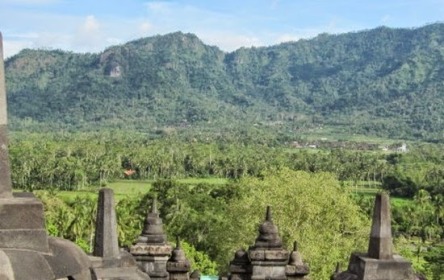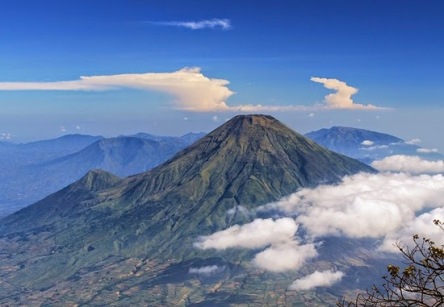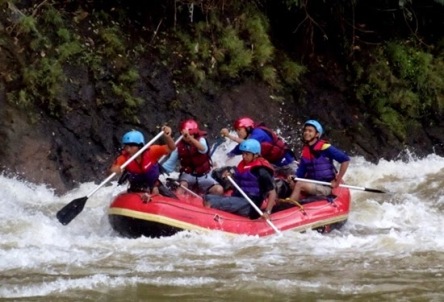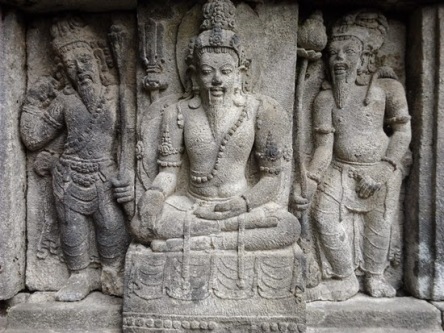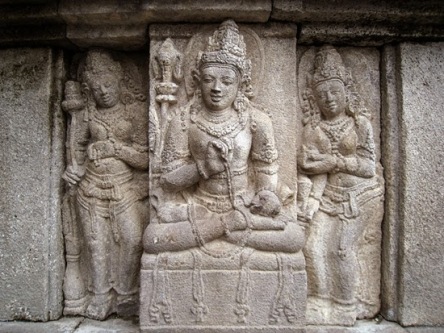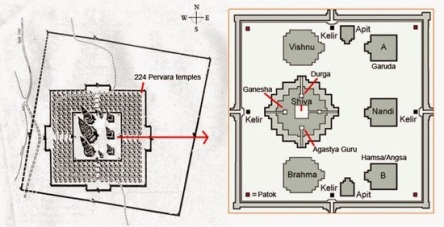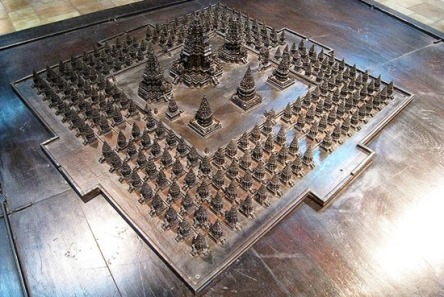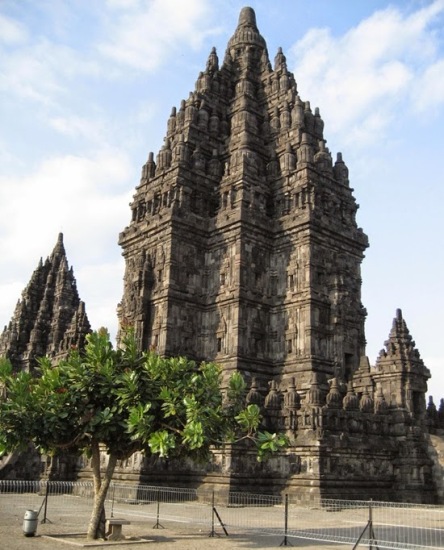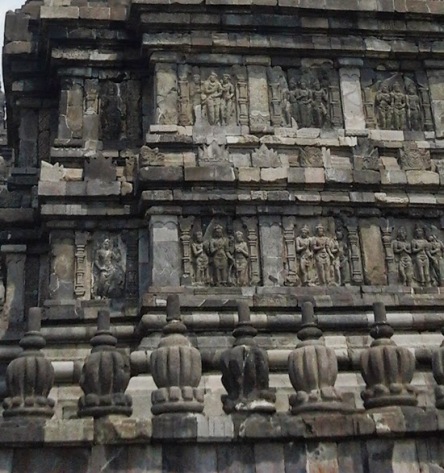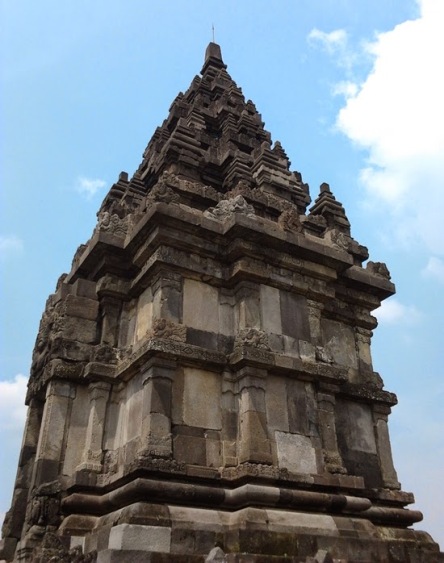The main gate has three entrances, while the second has five main gate entrance. Everything paduraksa shaped (arch-shaped building has a roof, Red). On the second page of the terrace, roughly 45 meters to the north there is a shelf (base, Red) called Candi Batu Putih. Approximately 37 meters northeast there is a shelf which is the cremation temple.
In the southeast corner of the temple there is a burning one old well where the water containing the mysteries. It is said that the well was named Amrita Mantana which means holy water that has been given a mantra. According to myth, the water can be useful in accordance what is desired and is often used for events such as making ritual procession of holy water for Hindu procession called Tawur Agung.
Furthermore, 10 meters to the east of the temple there is a stone structure pedestals Combustion (foundation stone pillar, Red) totaling 18 pieces lengthwise direction of the West-East and large pond. Approximately 40 meters south of the stone structure of the fruit shelf pedestals are called Paseban.
In the east and south Paseban there is a gate that connects between the cave and the pavilion. Batur pavilion housed a square measuring 20 x 21 meters and up to 1.46 meters composed of andesite rock on the north side of the east and west, there are stairs up which is composed of andesite. On the surface of the pavilion there are a number of pedestals shelf totaling 24 pieces.
In the South East there Paseban stone structure called the centers and to the south the halls there are three small temples of stone which consists of andesite stone floor. To the east of the halls in the lower location there are several pools. In the southern part of the pools are round, while in the north a long rectangular pond. To go into each pool must pass through the hallway and some gate found in each pond.
Based on the inscription issued by the Rakai Panangkaran year 746 -784 AD, the region is called Abhayagiri Ratu Boko Temple. Abhaya means no hazards and giri means hill or mountain. Temple means dormitory or place. Thus Abhayagiri Vihara means dormitory or a Buddhist monk who is located on a hill full of peace.
In the next period Abhayagiri Vihara renamed Walaing palace proclaimed by Rakai Walaing vassal named Pu Kumbayoni. In 1790 a researcher from the Netherlands named Van Boeckholtz find any archeological ruins on a hill, Ratu Boko. One hundred years later, FDK Bosch pour conduct research and research findings into a book titled Ratoe Van Kraton Boko. So there is archaeological on the hill known as Boko Kraton Ratu Boko. In principle, Ratu Boko Palace is divided into 4 zones, namely:
1. West zone
Approximately 2 acres, this area is known by locals as Mount Tlatar – rocks were arranged. The side of the hill is quite steep and it is only used for agriculture. Archaeological discoveries here have attracted, lane sedimentary rocks, small pool and large local and foreign as well as pottery.
2.Center Zone
Impressive large stone gate, the first one has three entrances, and the second has five, entrance forms is known as Java Paduraksa and traditional in construction. Not far from the gates of the White Stone is limestone temple, his name means ‘white stone’.
There is also a two-tier structure that measures 26 square meters. The center is a deep square hole. It is speculated that this would be a crematorium.
This zone also has a large pool, and a series of stone foundation pillars of the building will be held. Using traditional building techniques of the time, the walls and roof pillars would have been made from organic materials, so that they no longer remains.
3. East zone
East Region has more pools, and also a series of caves. The caves were carved into the rock. Lanang cave houses three white stone statue. Stairs to some caves have been carved into the rock of the hill. A Buddha statue is also found in this area.
4. Southeast zone
There is evidence of a hall or pavilion, surrounded by a stone wall with entrance Paduraksa another way, another position where the pillars will be located clear. A rectangular pond nearby, as well as three small temples. Another series of round and rectangular swimming pool is in this area.
